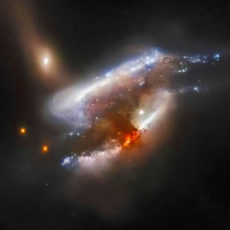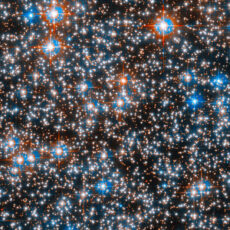
NASA celebrates the 34th anniversary of the Hubble Space Telescope wit this stunning image of the Dumbbell Nebula, also known as M76, located 3,400 light-years away in the northern circumpolar constellation Perseus.

The Dumbbell Nebula is classified as a planetary nebula, better described as an expanding shell of glowing gases that were ejected from a dying red giant star. This star eventually collapses to an ultra-dense and hot white dwarf, or in this case, a ring, seen edge-on as the central bar structure, with two lobes on either opening of the ring.
- ADVANCED TECH MEETS ICONIC DESIGN: The NexStar 8SE pairs Celestron’s legendary orange tube with a fully computerized GoTo system—ideal for those...
- 8-INCH SCHMIDT-CASSEGRAIN OPTICS: The large 8" aperture gathers enough light to reveal fine lunar details, cloud bands on Jupiter, and deep-sky...
- FULLY AUTOMATED GoTo MOUNT WITH NEXSTAR+ HAND CONTROL: Use the NexStar+ hand control to select from a 40,000+ object database. The computerized mount...
Most of Hubble’s discoveries were not anticipated before launch, such as supermassive black holes, the atmospheres of exoplanets, gravitational lensing by dark matter, the presence of dark energy, and the abundance of planet formation among stars. Hubble will continue research in those domains and capitalize on its unique ultraviolet-light capability on such topics as solar system phenomena, supernovae outbursts, composition of exoplanet atmospheres, and dynamic emission from galaxies,” said the NASA Hubble Mission Team.










